Did you know that only 15% of youth on the autism spectrum meet recommended physical activity levels ? This surprising fact highlights a major gap—yet it also uncovers an incredible opportunity. When fitness programs are tailored to autistic individuals, they can drastically boost motor skills, confidence, and quality of life for both children and adults on the spectrum. If you’re seeking proven ways to engage, support, and empower individuals with autism through physical activity, this guide is for you.
Revealing the Impact: Why Fitness Programs for Autistic Individuals Are Crucial
"Only 15% of youth on the autism spectrum meet physical activity recommendations, yet tailored fitness programs can drastically improve life outcomes." – Center for Disease Control and Prevention
- The unique challenges and opportunities in fitness for autistic adults and children
- Practical ways fitness pros can support individuals with autism spectrum disorder
- How exercise programs dramatically boost quality of life
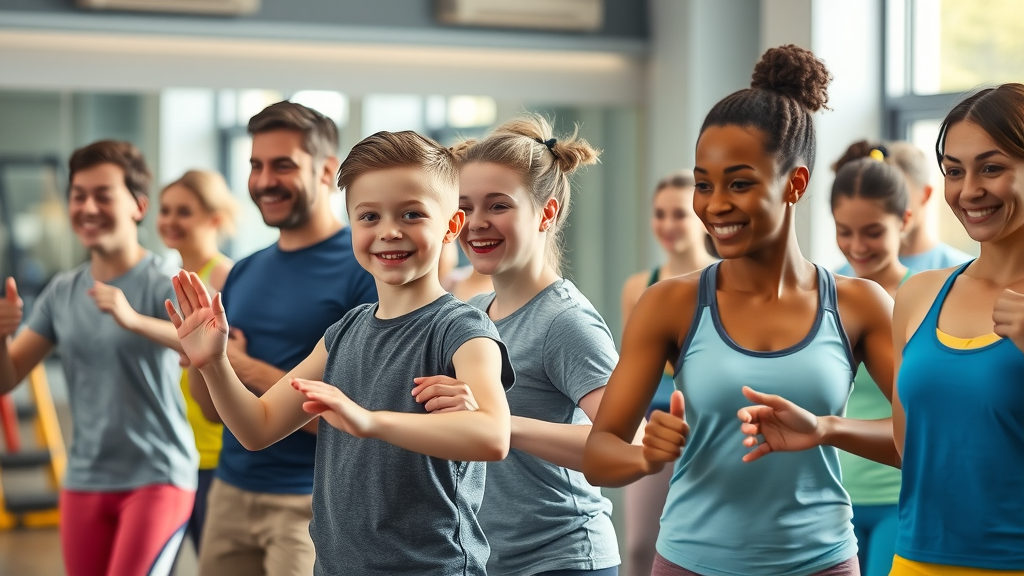
Fitness programs for autistic individuals address a vital need often overlooked in public health. With tailored exercise programs, autistic adults and children benefit not just from improved fitness level, but also increased socialization, better sensory processing, and boosted self-confidence. Standard group fitness classes typically overlook the unique ways that individuals with autism experience exercise, but with the right adaptations, participation can be both accessible and fun. Every fitness pro working with the autism spectrum can transform a mere activity into an empowering, life-changing experience.
In addition to strengthening physical health, autism fitness programs help reduce anxiety, minimize repetitive behaviors, and open doors for social engagement. Scientifically backed by systematic reviews, these specialized approaches improve motor skills in ways that go well beyond the gym. For both autistic adults and autistic children, the impact isn’t just measured in physical milestones, but in happiness, independence, and a sense of belonging.
How Fitness Programs for Autistic Individuals Support the Autism Spectrum
| Feature | Standard Fitness Program | Tailored Autism Fitness Program |
|---|---|---|
| Sensory Environment | Often loud, unpredictable | Sensory-friendly, low distraction |
| Instructions | General verbal cues | Clear, step-by-step visuals & short phrases |
| Social Inclusion | Limited peer support | Promotes positive peer interactions |
| Outcome Focus | General fitness level | Motor skills, confidence, self-regulation, quality of life |
The Science: Physical Activity and Autism Spectrum Disorder
- Improved motor skills
- Reduced anxiety and repetitive behaviors
- Enhanced social engagement
Research shows that physical activity significantly benefits those with autism spectrum disorder . Regular exercise not only helps develop basic motor skills like coordination and balance, but also reduces stress and repetitive movements that are often challenging for individuals with autism spectrum disorders. Systematic review evidence suggests that structured routine and sensory-adapted environments foster even greater improvements. Fitness pros trained in autism exercise understand the importance of patience and gradual progression, as individuals may have unique sensory processing and communication needs. For both children and adults with autism, these tailored approaches ensure the fitness program is not just effective, but enjoyable.
Enhanced social engagement is another standout benefit. Studies repeatedly show that fitness programs for autistic individuals can increase willingness to participate in group or community activities, which is a significant step toward social inclusion. By building positive experiences with exercise programs early, autistic children and adults can gain not just physical fitness, but essential life and social skills that contribute powerfully to long-term quality of life.
Real-World Success Stories: Fitness Pros Transforming Lives on the Spectrum
"Since starting our autism exercise program, my son is more coordinated and interacts better with peers." - Parent of an autistic child
Fitness pros are making a difference across the country by developing and leading autism exercise initiatives that adapt traditional routines to the needs of spectrum disorder. These programs emphasize skill acquisition, positive reinforcement, and individualized praise. One autistic adult credits his tailored fitness program for helping him land his first job, citing increased confidence and the practical ability to handle physical tasks and interact with coworkers as direct outcomes. Another group of autistic children in a sensory-friendly martial arts class displayed remarkable progress with impulse control and group cooperation—demonstrating that the benefits of fitness programs extend far beyond the physical.
The consistent element in these stories is adaptability. Fitness pros who succeed with individuals with autism spectrum disorder draw on a range of tools: visual schedules, sensory breaks, and fostering environments where differences are celebrated. Through their commitment and the use of evidence-based fitness programs for autistic individuals, lives are being transformed at every age and ability level.
Adapting Fitness Programs for Autistic Individuals: Approaches for Success
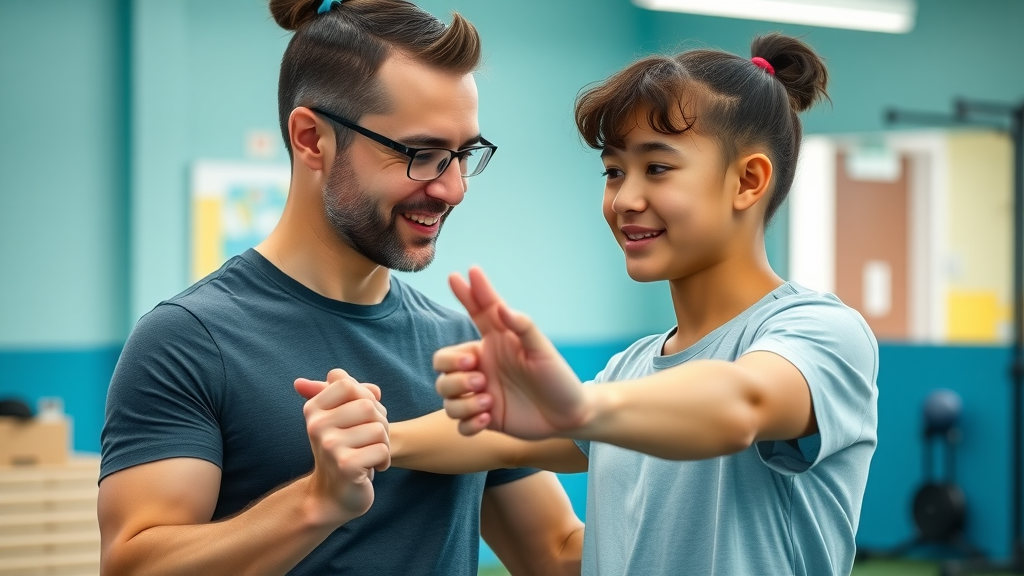
Creating a truly effective fitness program for autistic individuals starts with understanding their unique needs. Adaptation is more than just adjusting movements—it’s about fostering predictable, welcoming environments where every participant can thrive. The most successful autism fitness programs are built on clear communication, routine, and consistent, sensory-sensitive feedback. These adaptations don’t just ensure safety—they support growth, enjoyment, and trust for both autistic adults and autistic children .
A fitness pro supporting autism spectrum disorder should aim to minimize sensory overload by reducing visual noise and harsh sounds, establishing predictable session structures, and offering step-by-step demonstrations. Individual preferences and feedback are key; progress monitoring and open dialogue help participants feel empowered and respected. In many cases, it’s as simple as using soft lighting, color-coding equipment, or providing a calm retreat area when someone becomes overwhelmed.
Customizing Exercise Programs for Individuals with Autism
- Sensory-friendly environments
- Predictable routines and clear instructions
- Progress monitoring
Customization in autism exercise is essential. Sensory processing differences demand thoughtful modifications—such as limiting background noise or giving extra time to transition between exercises. Predictable routines help reduce anxiety; visual schedules and cue cards make each step clear. Fitness pros are encouraged to collaborate with families, therapists, and allied health professionals to build a holistic exercise program designed around the strengths and needs of individuals with autism spectrum disorders. Regular check-ins and progress tracking help set attainable goals and ensure continued motivation.
These personalized approaches are not just for those with significant sensory needs. Even autistic adults with high-functioning skills may benefit from specific routines, motor planning drills, and opportunities to track progress in their fitness level. With support and tailored programs, individuals with autism are empowered to reach milestones once thought unattainable.
Role of the Fitness Pro in Supporting Autism Spectrum Disorder
"Every fitness program should celebrate neurodiversity by meeting individuals where they are." – Adaptive Fitness Professional
The fitness pro is the centerpiece of any successful fitness program for autistic individuals . By creating a supportive, understanding atmosphere, they encourage exploration, risk-taking, and accomplishment while respecting boundaries. Fitness pros are trained to observe body language, give brief and clear instructions, and adjust the pace as needed for each individual. Their commitment to celebrating every small victory inspires trust and deepens engagement.
In addition to guiding exercise routines, these professionals also play an important advocacy role. They work closely with families and allied health experts, helping individuals with autism spectrum disorder advocate for themselves and celebrating neurodiversity as an asset. This collaborative skillset defines the best fitness pros and ensures the long-term sustainability of successful, inclusive fitness programs.
Incorporating Motor Skills into Autism Exercise Programs
- Balance exercises, coordination drills, and functional movement patterns
Developing motor skills forms the core of many autism fitness initiatives. Routine inclusion of balance exercises, agility ladders, and coordination games helps individuals with autism improve motor function, spatial awareness, and physical confidence. These activities, often embedded in playful or real-world contexts, provide a safe platform for steady, measurable growth.
Fitness pros incorporate functional movement patterns —such as reaching, squatting, and controlled jumping—into daily routines. When practiced regularly, these drills not only boost physical fitness but make ADLs (activities of daily living) easier to manage. For autistic individuals, better motor skills often lead to deeper independence and a richer quality of life outside of structured exercise sessions.
Best Exercises for Autistic Adults: Effective Activities in Fitness Programs
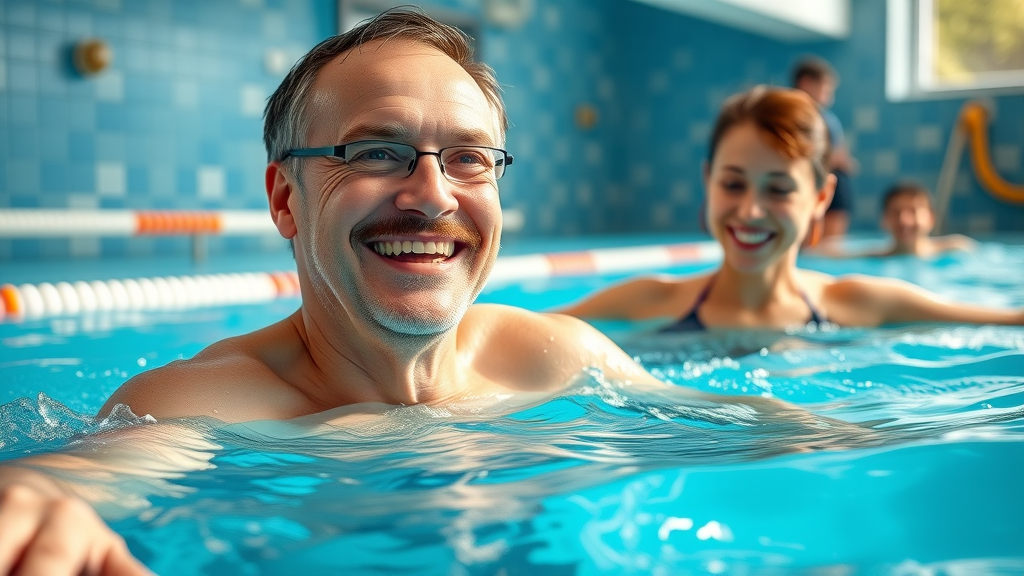
Exercising with Purpose: Autism Exercise Choices for Adults with Autism
- Walking and outdoor aerobic activity
- Water-based exercise (swimming, aqua aerobics)
- Resistance training
- Yoga and stretching
- Dance and rhythm coordination
When choosing exercises for autistic adults , it’s important to consider personal preference, sensory sensitivities, and specific fitness goals. Walking is often the easiest way to boost physical activity and can serve as a gateway to more structured aerobic exercise. Water-based activities, such as swimming or aqua aerobics, provide soothing sensory feedback and can be less intimidating thanks to the buoyancy and support provided by water. Resistance training is another fantastic tool, as it enhances strength and body awareness—key areas where many adults with autism seek improvement.
Yoga and stretching foster flexibility, reduce anxiety, and build mind-body awareness. Dance and rhythm games combine aerobic exercise with coordination, delivering both physical and social benefits. These varied exercises for autistic adults aren’t just good for fitness—they directly improve quality of life and self-expression for those on the autism spectrum.
Promoting Quality of Life through Regular Exercise for Autistic Adults
- Decreased aggression and self-stimulatory behavior
- Reduce co-occurring health risks
- Enhanced independence
Regular exercise provides far-reaching benefits for adults with autism . Research supports the finding that consistent participation in adapted exercise programs helps reduce challenging behaviors and can significantly lower the risk of obesity, diabetes, and cardiovascular problems. These physical health gains often translate into more independent living, reduced reliance on caretakers, and improved capacity to participate in work or community activities—a critical outcome for many seeking a higher quality of life.
For many, the most profound effects come not from the exercises themselves, but from the routine and self-confidence that regular fitness programming inspires. With each completed session, autistic adults build tangible skills and envision new possibilities for themselves. The support from fitness pros and peers creates a foundation for continued success, inside and outside the gym.
Building Fitness Programs for Autistic Children: Foundations for Lifelong Health
Essential Elements in Exercise for Autistic Children
- Sensory play activities
- Obstacle courses for motor planning
- Group-based games for socialization
- Relaxation and breathing techniques

Fitness programs for autistic children harness sensory play, creative games, and small group work to foster movement awareness and cooperation. Obstacle courses are a powerful way to improve motor skills , coordination, and executive function in a structure that feels more like play than therapy. Simple team games—adapted for sensory needs—encourage communication and appropriate social behavior, while intentional cool-downs using relaxation or simple breathing techniques help with self-regulation.
A successful exercise program for children with autism is designed to build confidence and reduce anxiety around physical activity. Predictable routines, individualized instruction, and progressive challenges allow every child—no matter their starting point—to experience victories and grow a positive relationship with movement early in life.
How Physical Activity Supports Development in Children with Autism
| Milestone | Suggested Activity |
|---|---|
| Gaining balance and spatial awareness | Balance beams, simple yoga poses |
| Hand-eye coordination | Throwing/catching, ball games |
| Social communication | Group relay races, partner games |
| Emotional self-regulation | Breathing exercises, slow stretches |
Motor development and emotional growth go hand-in-hand for autistic children . Physical activity—when delivered intentionally—can help children hit critical developmental milestones, such as balance, hand-eye coordination, and verbal/nonverbal communication. This foundation sets the stage for lifelong participation not only in fitness programs, but also in school, hobbies, and relationships.
Innovative Autism Exercise Programs and Tools for Individuals with Autism Spectrum
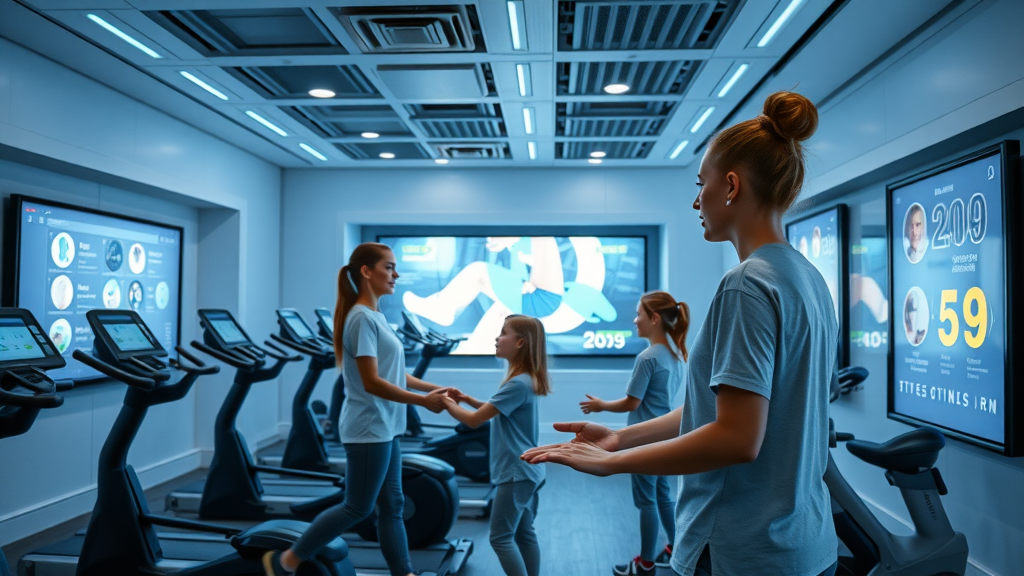
Technology and Adaptive Tools Enhancing Fitness for Individuals with Autism
"The right technology and adaptive equipment can break barriers for individuals on the spectrum." – Occupational Therapist
Technology is revolutionizing autism exercise by making fitness more accessible, engaging, and measurable. Adaptive fitness apps lead participants through exercises using visual step-by-step guidance, while wearable trackers give both fitness pros and individuals objective data on progress. Specialized equipment—weighted balls for sensory feedback, color-coded mats for spatial cues, and noise-canceling headphones—enable individuals to work on motor skills and physical fitness in environments tailored to their needs.
These innovations are particularly helpful for families looking for home-based solutions or programs tailored to accommodate different sensory integration needs. By partnering high-tech solutions with experienced fitness pros, autism fitness is becoming safer, more enjoyable, and more inclusive than ever.
Community-Based Autism Exercise Initiatives Transforming the Industry
- Notable programs: Exercise Buddy, The Miracle Project, local adaptive sports leagues
Across the country, adaptive fitness organizations are breaking down barriers for individuals with autism spectrum disorder . Programs like Exercise Buddy offer app-based exercise routines designed specifically for people on the spectrum, while The Miracle Project uses theater and movement to encourage expression and social connection. Local adaptive sports leagues are growing, providing opportunities for both autistic children and autistic adults to join teams and celebrate their abilities.
These community initiatives not only foster regular physical activity but also create a lasting sense of belonging that transcends the gym or sports field. The advocacy, acceptance, and celebration of neurodiversity seen in these spaces are quickly becoming the standard for inclusive fitness programs everywhere.
Training Tips for Fitness Pros: Delivering Safe and Effective Fitness Programs for Autistic Individuals
Key Communication Strategies with Autistic Adults and Children
- Using visual cues
- Short, simple instructions
- Positive reinforcement

For a fitness pro , effective communication is at the heart of every successful autism fitness program . Many autistic individuals benefit from visual schedules, simple illustrated instructions, and concrete, step-by-step demonstrations. Keeping language clear and instructions brief reduces stress and supports understanding. Every session should be structured with plenty of positive reinforcement, celebrating both effort and accomplishment.
Visual cues and consistent routines help individuals with autism focus on physical activity rather than worrying about unexpected changes or complicated explanations. Small adaptations like using a visual timer or a "first/then" chart can dramatically increase engagement and confidence. Fitness pros should always be open to feedback, adapting based on each participant’s comfort level and preferences.
Ensuring Safety and Encouragement in Every Fitness Program
Fitness pros working with individuals on the autism spectrum must consider unique safety needs. Predictability, slow transitions, and careful observation can prevent overstimulation and accidents. Clear instruction and close supervision are paired with ongoing encouragement to help participants push their limits safely. Fitness pros should also create an open dialogue with family members and allied health professionals to ensure that the environment and exercise program remain supportive and appropriately challenging.
Encouragement is vital. By celebrating every small achievement and offering praise at each stage, fitness pros can empower autistic individuals to stay motivated and challenge themselves. Safety and positive feedback are the foundation of fitness programs for autistic individuals that lead to lasting benefits both inside and outside the gym.
Professional Development: Becoming a Fitness Pro for the Autism Spectrum
- Autism exercise certifications
- Partnerships with allied health professionals
- Community outreach
As awareness and research on autism spectrum disorder grow, so too do opportunities for professional development. Certifications in autism exercise equip fitness pros with the skills to confidently modify exercises, communicate effectively, and manage sensory processing needs. Collaborating with occupational therapists, speech pathologists, and other allied health professionals ensures that programs are truly person-centered.
Community outreach—including free workshops, family events, and collaborations with local autism organizations—can help more families access the benefits of adaptive fitness. By committing to ongoing learning and partnership, fitness pros can lead the way in providing fitness opportunities that work for every member of the autism community.
Common Questions about Fitness Programs for Autistic Individuals
What exercise is best for autism?
- Aerobic, balance, and structured group activities address both physical and social needs. Individual preference and sensory tolerances are paramount.
The best exercises for autism are those that fit the individual’s sensory needs and preferences. Activities like walking, swimming, yoga, and group-based games foster both motor skill development and positive social interactions. Including a variety of movement types helps keep sessions fun and supports all-around development.
What is the 6 second rule for autism?
- A communication strategy: pause for 6 seconds after giving instructions to give individuals with autism spectrum disorder sufficient processing time.
The "6-second rule" is a helpful communication tool: after giving a direction or instruction, pause for six seconds to allow someone with autism spectrum disorder enough processing time. This gives them a chance to fully understand and respond, reducing frustration and encouraging independence.
What do autistic people do to fit in?
- Many use social stories, practice routines, or join interest-based groups such as fitness programs or autism exercise classes to build connections.
Fitting in can mean joining groups that share a common interest, like fitness or sports. Many autistic individuals also benefit from practicing social skills, building routines around shared activities, and using strategies like social stories to feel more comfortable in new environments. Fitness programs designed for autism provide a valuable safe space for social growth.
What are ADLs for autism?
- ADLs (Activities of Daily Living) refer to personal care tasks; fitness programs can improve independence in daily routines for autistic individuals.
ADLs are essential daily tasks such as dressing, eating, personal hygiene, and mobility. By improving motor skills and coordination through fitness programs, autistic individuals often find it easier to complete these tasks independently, boosting confidence and quality of life.
Frequently Asked Questions about Fitness Programs for Autistic Individuals
- What kind of results can I expect from a consistent exercise program?
- How do I find a trusted fitness pro who specializes in the autism spectrum?
- Are there group fitness programs specifically for autistic adults?
Many individuals and families report improvements in behavior, communication, physical fitness, and overall well-being following a tailored fitness program. Finding a certified and experienced fitness pro—often through local autism organizations or by looking for autism-focused credentials—ensures quality support. Adaptive group fitness programs for autistic adults are increasingly available at gyms, community centers, and online platforms.
Consistency and individualized approach are key to producing significant, lasting results. Reach out to autism advocates and fitness professionals in your area for guidance and program recommendations suited to your specific goals.
Summing Up: The Unmatched Power of Fitness Programs for Autistic Individuals
- Fitness programs for autistic individuals lead to:
- Greater confidence and social inclusion
- Sharper motor skills and reduced risk of comorbid health issues
- A tangible rise in quality of life for those with autism spectrum disorder
"Engagement in exercise is not just about building muscle—it’s about building community and confidence for every individual on the autism spectrum." – Fitness Pro
Start today—empower yourself or your loved ones with a fitness program tailored to the autism spectrum, and unlock brighter, healthier tomorrows for all.
Take the Next Step with Fitness Programs for Autistic Individuals
- Explore local and online adaptive fitness programs for autistic children and adults
- Connect with certified fitness pros specializing in the autism spectrum
- Commit to providing or seeking fitness opportunities that empower all individuals with autism
 Add Row
Add Row  Add
Add 

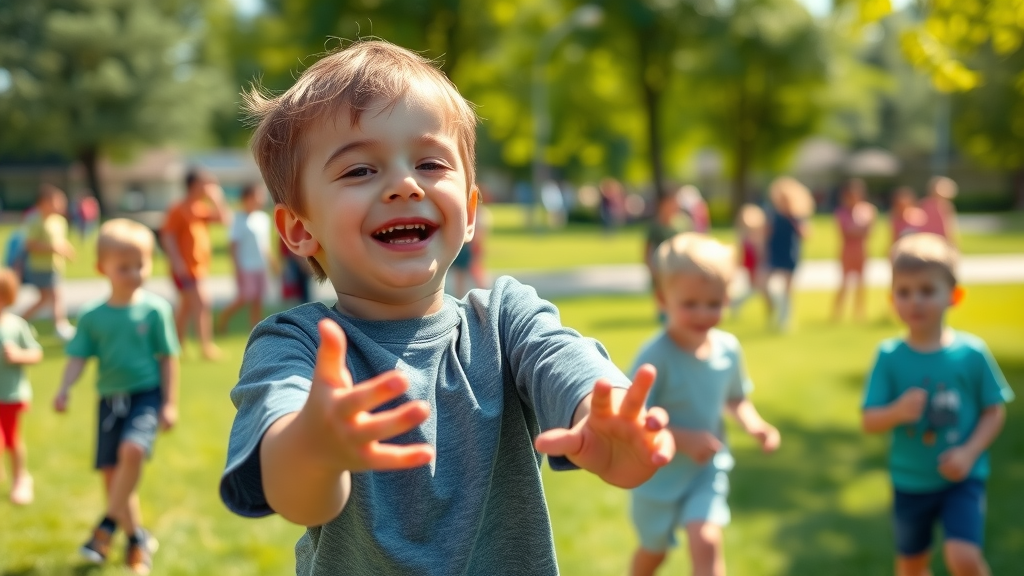

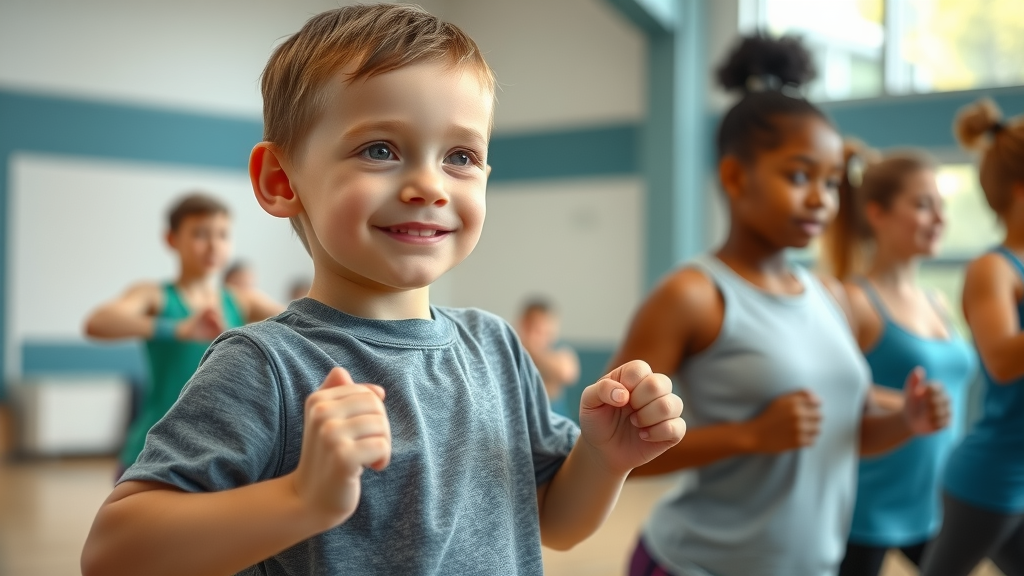
Write A Comment